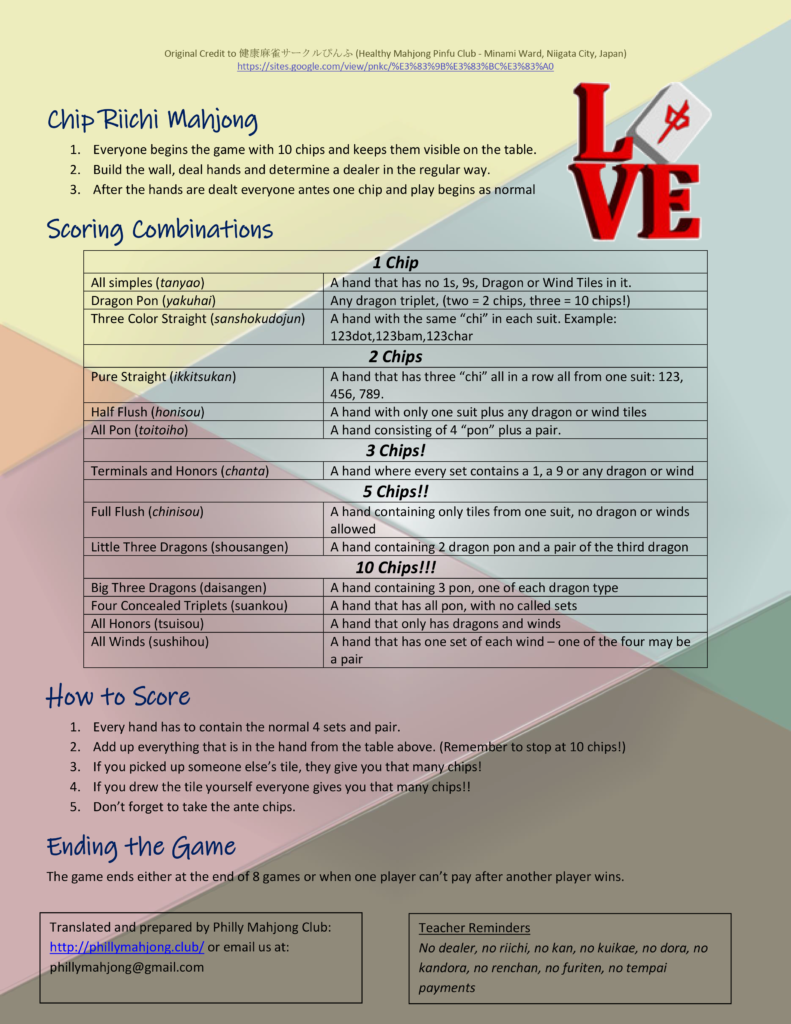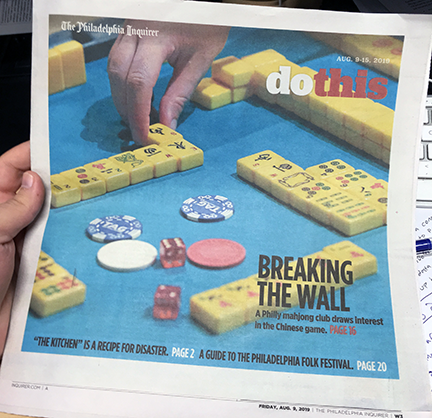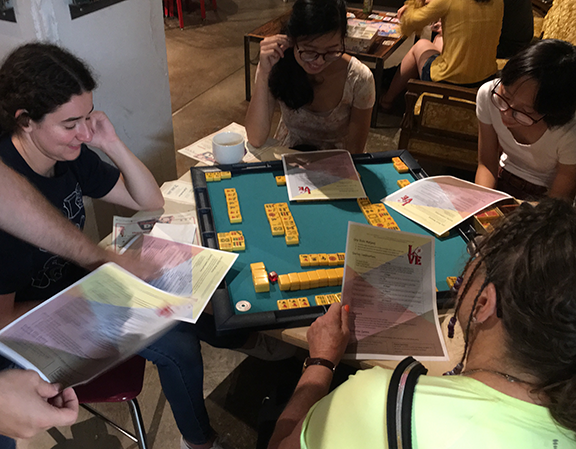What’s With The Chips?
Chip mahjong has been making rounds on Discord lately and I’m definitely interested. As a club leader and teacher of new players, I’m always happy to look at new systems of teaching. To the uninitiated “western” citizen, riichi looks indecipherable. Anything that can refine my methodology towards helping them overcome their hesitation is worth checking out.
First, credit where it is due.

Chip mahjong is a teaching method created and shared by a small club, the Healthy Mahjong Pinfu Club, in Nigata City, Japan. It is a home-grown method to teach new players some basics of riichi. At this point I have to presume they use actual chips—like “nom nom” potato chips.
Philly Mahjong Club member Vinnie Emilianowicz found the club’s website and their posted rule guide. With permission, the image was shared and a translation crowd-sourced in Reddit “r/translator” channel. (Big thanks to user “clearingitup” for the work.)
The people in Philadelphia spent some time ironing out the transcription and produced a useful English language handout!

So what’s here?
Simple setup instructions, a table of straightforward hands, scoring instructions, and an end-game condition. Similar to Tibet method, Chip mahjong cuts off a lot of the usual riichi conventions (see “Teacher Reminders”) that can muddle your demo session. Unlike Tibet, Chip still offers a flavor that is distinctly riichi.
What is not here?
How to play. The onus of teaching basic hand structure, making calls, etc. is up to the teachers preferred style and is outside the scope of this sheet.
Where does this belong in our toolkit?

Chip falls somewhere between a core-basics method like Tibet and just diving into a full riichi tutorial. It offers a light framework to teach in. By substituting poker for potato chips, or even just a handful of pennies, the ante and payment system resembles something a new student should be familiar with. An instructor will still have to know how to talk though those points, but with a little practice they aren’t hard to teach. One path is to prime players with Tibet before setting them loose on Chip, as a nascent group in Delaware has recently done.
Taylor Heffernan of the Philadelphia Mahjong Club has been using Chip to teach for a couple months and has some positive things to say about the results.

“It’s a great teaching tool for getting players a basic proficiency very quickly. Players are often fully autonomous after a single hand of chip mahjong. Watching a new player, on their own, look at a yaku sheet and then pass on an opportunity to call a useless chow is wonderful. Traditionally, it’s been hard to expose new players to the fun risk/reward of mahjong during teaching games. Chip mahjong’s very shallow learning curve puts the fun in front of them right away.”
Is this better than methods I might already be using?
I have not had an opportunity to use Chip myself so the jury is still out. I have questions such as how well new students transition from Chip to playing riichi under an established rule-set. But Taylor’s results are promising.
“[They take] to it reasonably well—there are a few things we need to un-teach. The 1-han minimum is a bit tricky, but that’s always tricky with brand new players. Closed-only hands, calling riichi, and furiten actually all came pretty naturally. I think learning the basic mechanics with training wheels on helps make the harder stuff easier to swallow.”
Give it a try, and please share your feedback and results in the comments!
